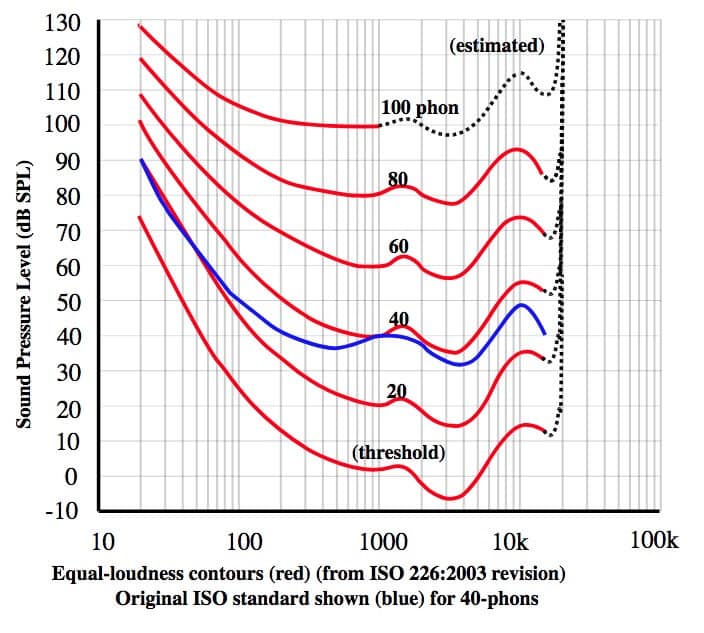Louder is always better, right? Who doesn’t love to hear their favourite tracks on huge speakers? It makes everyone dance and sing from the top of their lungs. It is exciting and energetic. But being able to get that feeling whether you play a track in a pair of headphones or a huge arena starts from a well balanced mix.
Part of a mixing engineer’s job is finding the right levels for each element of the song throughout the track while keeping a healthy headroom. The more instruments playing at the same time the louder it gets, which results in less headroom to work with and the closer the mix gets to clipping. Tools like brickwall limiters are very useful to prevent mixes from clipping but they can be deceiving since they can destroy the dynamic range of your track.
So, how do we find the balance? How can we get our mixes loud and still get a healthy headroom? Let’s start by defining these two concepts: loudness and headroom.
Back To The Basics
Loudness is a subjective perception of sound pressure. It is a combination of physical, physiological and psychological components. A high sound pressure level (SPL) will normally be perceived as a loud sound. But due to the nature of the human hearing not all frequencies are perceived equally loud at the same SPL. This is shown in the Fletcher-Munson Curves, also known as Equal-loudness Contours.

On the other hand, headroom is the amount of dBs between the loudest point of an audio signal and the clipping/distortion point of the recording. When a digital signal clips, the signal is capped adding unpleasant high frequency sounds and even making it inaudible.
With these two concepts in mind we can now think in ways to make your mixes feel louder without losing headroom.
Create Contrast
Not everything needs to be playing at the same time all the time. A good arranger will probably have it in mind while writing the song. But sometimes in the heat of the recording maybe some extra details were added or some parts were repeated throughout the track.
Making things coming in and out during the mix makes the track more dynamic and interesting. As we mentioned before, loudness is a subjective perception which can be obtained when our brain listens to a quiet part just before it gets busier. If there is no contrast in a song your brain will get used to that level and won’t perceive it as loud anymore. By keeping the verse light and then jumping into a full-band-playing chorus you make the latter instantly louder for the listener.
Add Saturation
As we saw in previous articles, saturation is a type of distortion that adds subtle harmonics to the signal. By adding harmonics in our mix we increase the amount of information in the high frequency range and therefore raise their volume. Looking at our Fletcher-Munson’s curves it’s easy to understand that this high frequency lift will be perceived as an increase in loudness. It is an extended mixing practice to add saturation or parallel distortion to certain elements of the track to highlight them and make them cut through the mix.
More Cowbell
High pitched instruments like cowbells, tambourines or string pads are elements that can help your productions feel more alive. Another good trick is to double an instrument in a higher voice. Adding these types of elements in specific parts of the songs will fill up the high frequencies region of the spectrum helping to make them more vibrant and increasing the perceived loudness.
Punch
A tight, bouncy low end is part of the magic of making everyone’s feet move. Locking the bass drum and the bass is part of the trick. The only problem is that when the two hit at the same time they can reduce your headroom drastically. Using side-chain compression on the bass will not only help your bass drum to cut through but will also help to control the dynamics of the overall track.
Gain Staging
It is important to keep an eye on your levels while you are mixing. If all tracks are very hot right from the start, the moment you add more elements to the mix your master bus will clip. Everything sums up. That’s why properly gain staging before starting mixing will help you achieve a healthy headroom. You can read more about the importance of gain staging and how VU metres can improve your workflow in this previous article.
But even when everything is done correctly, sometimes we find our master bus clipping. Before reaching out for a limiter to fix this issue try to find when what is causing the mix to clip. Is it the bass drum? The vocalist? A very sharp snare hit? Once you find it, consider your options. Perhaps something as simple as a quick volume automation or tweaking the compressor or EQ of that element can keep its level in check.
Did you know about these recommendations? What is your strategy to keep a healthy headroom in your mixes? Let us know in the comments and share your own tricks to make your songs loud while dynamic.








Leave A Comment
You must be logged in to post a comment.